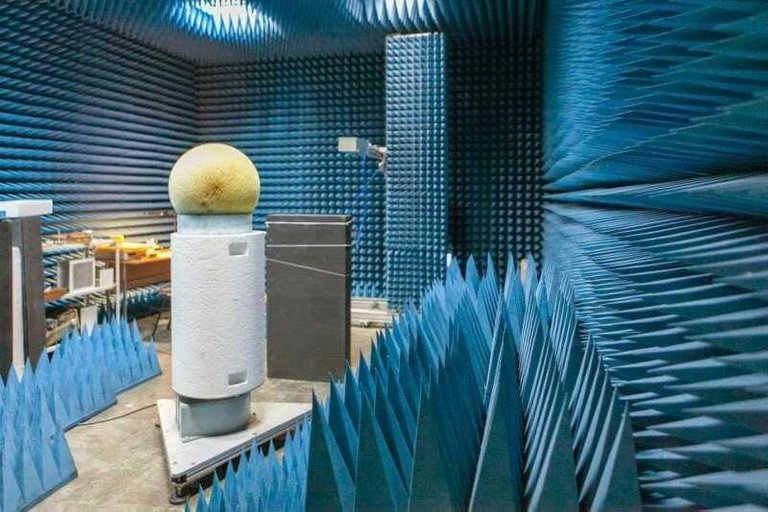A new understanding of the scattering of electromagnetic waves has led researchers recently to create a completely invisible homogeneous cylinder object in the microwave range.
The invention of this transparent object contradicts the idea that has been prevalent among scientists. Scientists have previously conducted experiments on transparency that rely on metamaterial coatings.
Cloaking metamaterial is the use of metamaterials in the Invisibility Cloak.
This is done by manipulating the path through which light passes through a new optical material.
Metamaterials directly and control the propagation and transmission of certain parts of the light spectrum and show the potential to create an object that seems invisible.
Cloaking metamaterials, based on optical transformations, explain the process of protecting something from view by controlling electromagnetic radiation.
The objects in the specified location still exist, but incident waves are guided around them without being affected by the object itself.
Physicists from the University of ITMO, Ioffe Institute and Australian National University use ordinary water whose refractive index can be adjusted by changing the temperature.
Research leads to the first experimental observation of an invisible homogeneous object by means of scatter cancellation.
Importantly, the developed technique makes it possible to switch from visible objects to transparent objects at the same frequency of 1.9 GHz by simply changing the water temperature in cylinders from 90 ° C to 50 ° C.
 
The transparent subject becomes sticking with the development of metamaterials - structures that are designed artificially with optical properties not found elsewhere in nature.
Metamaterials are capable of changing the direction of light in an exotic way, including creating a light curve around a cloaked object.
However, layers based on metamaterials are very difficult to fabricate and are not compatible with many other transparent ideas.
The method developed by the group is based on a new understanding of the process and abandoning the things that already exist in simplicity and cost effectiveness.
Theoretical calculations from scientists have been successfully tested in microwave experiments.
What matters is that the idea of creating invisible materials applied in research can be applied to other electromagnetic wave ranges, including to the visible range.
Suitable materials with good refractive indices are long known or can be developed when desired, "says Mikhail Rybin, first author of a paper and senior researcher at Metamaterials Laboratory at ITMO University.
Based on optical transformations, the scattering of electromagnetic waves explains the process of protecting something from view by controlling electromagnetic radiation.
The objects in the specified location still exist, but incident waves are guided around them without being affected by the object itself.
Scientists study the scattering of light from a glass cylinder filled with water.
In essence, an experiment that represents a two-dimensional analogue of the classical problem of scattering of a homogeneous sphere (scattering of Noodles), a solution to which is known for almost a century.
However, this classical problem contains an unusual physical value that manifests itself when a material with a high value of the refractive index is involved.
Apparently, the high refractive index is associated with two scattering mechanisms: resonant scattering, which is associated with the localization of light inside the cylinder, and non-resonant, which is characterized by subtle dependence on the frequency of the wave.
The interaction between these mechanisms is referred to as Fano resonance.
The researchers found that at certain frequency waves scattered through resonant and non-resonant mechanisms have opposite and mutually destructive phases, thus making the object invisible.
The discovery of a transparent object phenomenon in a homogeneous object rather than an object covered with an additional layer is also important from a technical point of view.
Since it is much easier to produce homogeneous cylinders, this discovery may encourage the further development of nanoscale antennas, wherein invisible structural elements can help reduce interference.
For example, a visible rod can be used as support for a complete miniature antenna connecting two optical chips.
World of Photography
>Visit the website<
Thank you for participating in #animalphotography
You have earned 5.05 XP for sharing your photo!
Daily photos: 1/2
Daily comments: 0/5
Multiplier: 1.01
Server time: 08:48:04
Total XP: 17.10/100.00
Total Photos: 2
Total comments: 7
Total contest wins: 0
Follow: @photocontests
Join the Discord channel: click!
Play and win SBD: @fairlotto
Daily Steem Statistics: @dailysteemreport
Learn how to program Steem-Python applications: @steempytutorials
Developed and sponsored by: @juliank
Hello! I find your post valuable for the art community! Thanks for the great post! ARTzone is now following you! ALWAYs follow @artzone and the artzone tag, and support our artists!
Hello! I find your post valuable for the wafrica community! Thanks for the great post! @wafrica is now following you! ALWAYs follow @wafrica and use the wafrica tag!